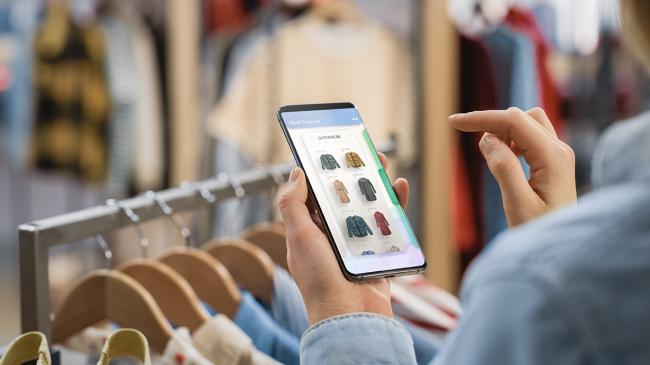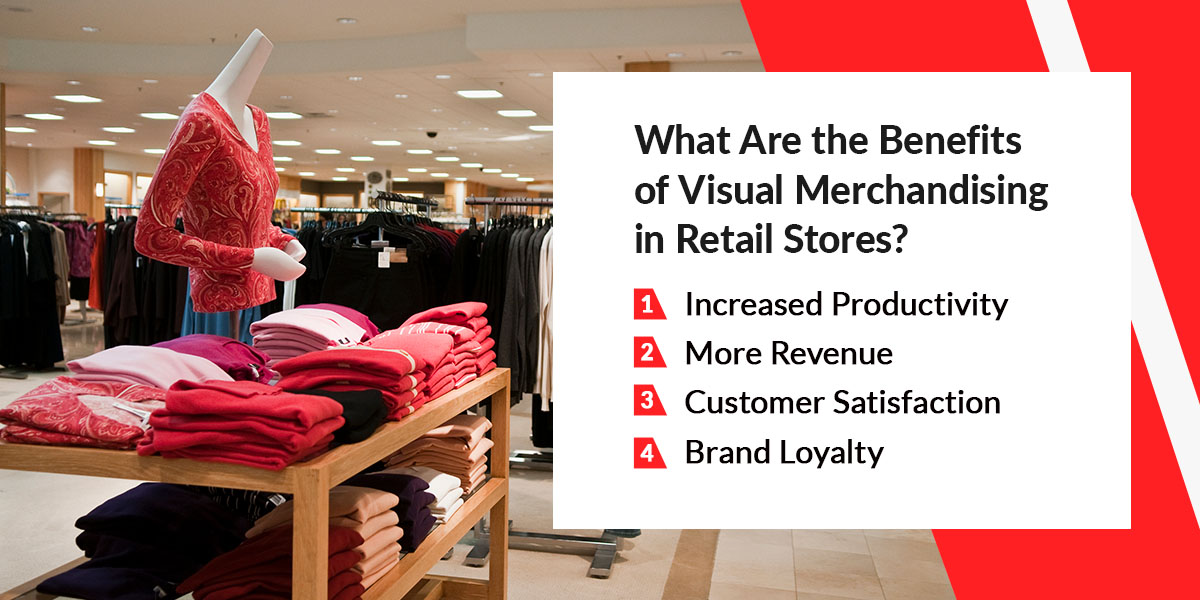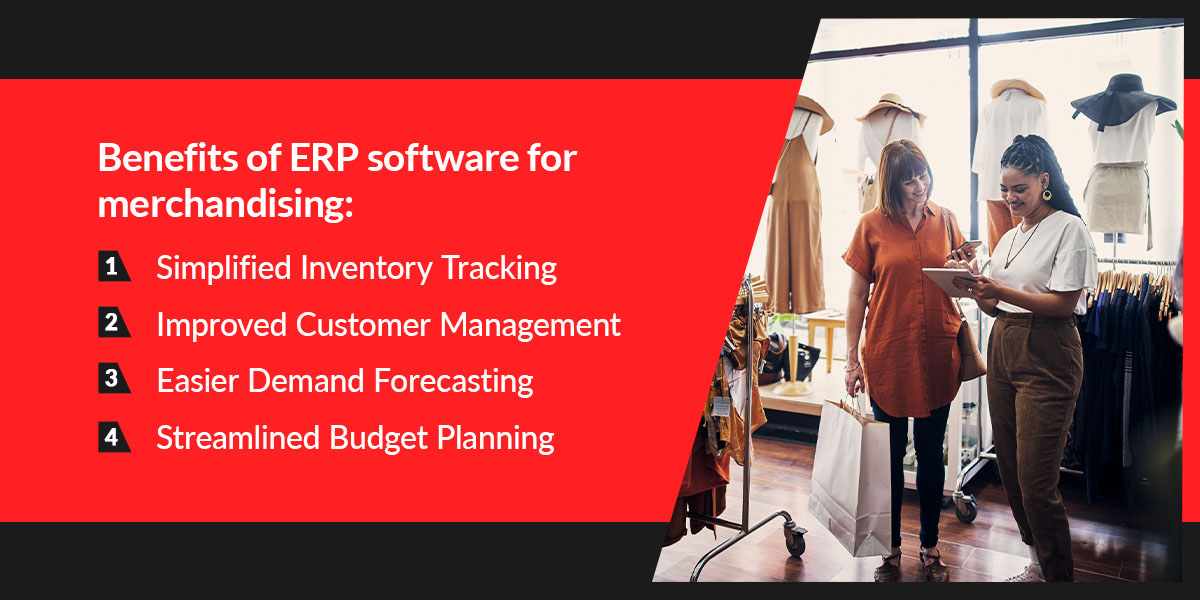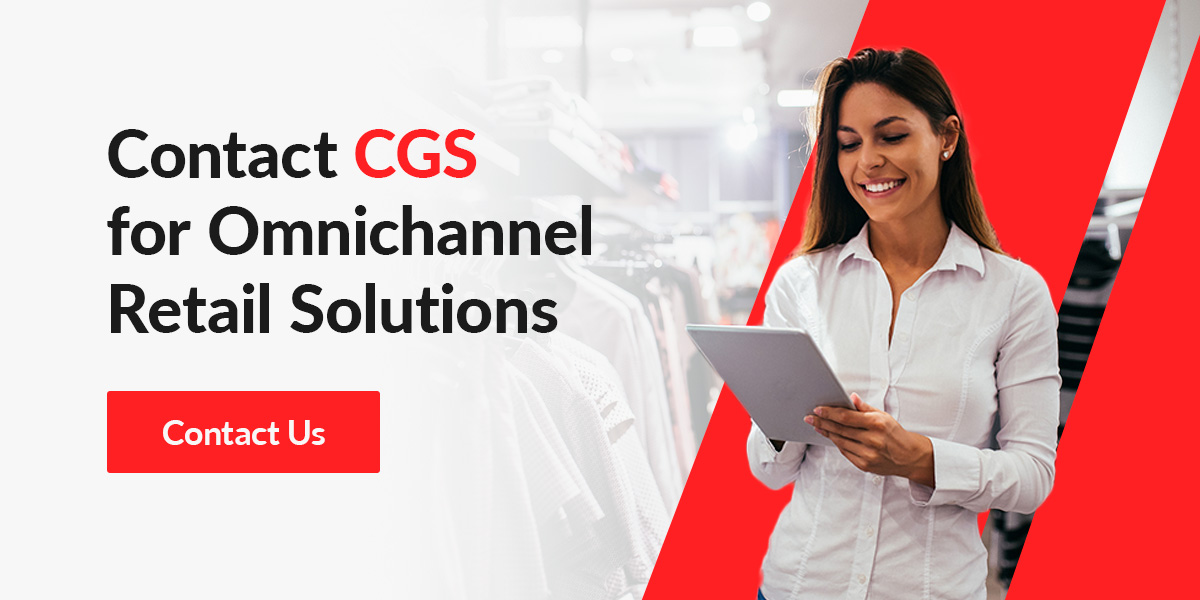Daniella Ambrogi is Senior Global Marketing Director for CGS's Application Services division, which offers BlueCherry® software and services to 500+ fashion, footwear, consumer goods and retail companies worldwide. Ambrogi offers 20+ years of experience in the fashion and retail business; she understands a brand's complex needs in an ever-changing marketplace.
Topics
Comprehensive Guide to Retail Merchandising

As a retailer or fashion brand, chances are you frequently seek ways to lure customers to your product line. This is merchandising in action. A carefully planned, research-supported retail merchandising strategy can make your workflow more efficient, generate revenue, enhance customer satisfaction, and ultimately build long-term brand loyalty.
What is a retail merchandiser? What strategies do they implement to captivate their customers and encourage sales? In this complete guide to store merchandising, we'll explore the benefits, types and best practices surrounding this process.
What Is Retail Merchandising?
Retail merchandising is the practice of integrating different strategies and activities to enhance retail displays visually. These activities include:
- Devising product marketing strategies.
- Matching specific products to target demographics.
- Designing the store in a way that engages customers.
Most shoppers don't consciously think about their sensory experience upon entering a store. That's why product merchandising is intended to be subtle. It's both an art and a science. Smells, sounds, colors, and temperature all contribute to a customer's experience. Retail merchandising aims to appeal to these senses and resonate with your audience, prompting them to purchase a product and return to your business in the future.
Regardless of the different strategies retailers incorporate, the overarching goal of retail merchandising is simple — attracting customers, growing a loyal consumer base and generating profit. Retailers can use in-depth market research and customer profiles to determine the most effective merchandising strategies.
Store Merchandising Strategies
Retailers can use numerous types of merchandising tactics to charm and entice their customers. Two primary types of product merchandising strategies are visual merchandising and omnichannel retailing.
What Is Visual Merchandising?
Visual merchandising is the process of arranging and displaying in-store products to spotlight their features and benefits. Here are some classic examples of visual merchandising in retail stores:
- Banners and signs
- Mannequins
- Window displays
- Floor stickers
- Product packaging
- Ambient lighting
- Promotional videos and interactive touch screens
- Music
- Seasonal displays
What Is Omnichannel Merchandise Planning?
Omnichannel merchandising aims to create a seamless shopping experience across every touchpoint — online platforms, brick-and-mortar stores and third-party marketplaces. This approach focuses on the individual customer, the products they're looking for and the channels they use to find them.
Omnichannel retailing considers all aspects of these customer touchpoints. That way, you can collect data from these different channels to create more personalized customer experiences.
For example, tracking a customer's purchase history can help virtual agents offer product recommendations based on their preferences. You might market your products through your online store, social media accounts, email and in person to reach a wider pool of shoppers.

What Are the Benefits of Visual Merchandising in Retail Stores?
By creating a seamless, sensory-enriching experience for customers and guiding them to make purchases, you can enjoy a wealth of benefits. Here are some perks of a successful retail merchandising strategy.
1. Increased Productivity
Store merchandising can make your sales floor and staff more productive. It optimizes your store's square footage and helps organize inventory. Employees can also provide better service, giving customers well-informed product knowledge and helping them find what they're looking for.
Furthermore, retail merchandising can reduce the time employees spend directing customers to aisles, promoting self-service shopping. While an employee can only assist one customer at a time, an effective display helps customers shop independently and locate what they need. This enables your staff to allocate more time to shoppers who need extra help.
The easier it is for customers to find the products they're searching for, the more time you can devote to other aspects of your business, making for more productive operations overall.
2. More Revenue
When done successfully, retail merchandising can positively impact your product sales and profits. Strategically placing items and guiding customers exposes them to more of your products. This exposure can quickly translate to impulse purchases, fuller baskets and happy shoppers.
An effective merchandising strategy can increase same-store sales by 3.7%. Additionally, a well-executed promotional display can boost sales by a whopping 193%. The incredible return on investment (ROI) you can achieve from your merchandising strategy makes it well worth the initial planning and investment.
3. Customer Satisfaction
Retail merchandising aims to give customers a worthwhile shopping experience, which translates to higher satisfaction. In turn, they're more likely to leave a positive review or return to your establishment. Customers can seamlessly find the products they need through immersive signage and strategically organized inventory.
Elements such as wide aisles, aesthetically pleasing lighting and pleasant fragrances can also enhance their overall shopping experience. You might also include a comfy seating area near fitting rooms so customers can rest while they wait. Effective merchandising makes shopping less of a chore and more of a sensory experience for consumers, incentivizing them to return and purchase more products.
4. Brand Loyalty
A solid retail merchandising strategy can encourage repeat visits and drive long-term customer loyalty. Consumers will continue to shop where they feel comfortable and know they can find the products they want. If you consistently deliver a positive shopping experience, they'll more likely be loyal to your brand and spread the word to others.
Retail Merchandising Best Practices
Now that you've learned what merchandising in retail is, let's go over some tips for making the most of your product merchandising strategy.
1. Identify Pain Points
While it's essential to acknowledge how your current products delight shoppers, it's equally important to understand why other items aren't selling as well. Perhaps a certain packaging style doesn't resonate with customers. Maybe shoppers are patronizing a competitor with a similar product line. Alternatively, you may just have outdated or low-demand products in your stock.
This is where researching competitors and retail merchandising trends can come in handy. By figuring out what other retailers are doing and what your audience is looking for, you can adjust your merchandising strategies, displays, inventory selection and packaging accordingly.
2. Optimize Your Space
Retail merchandising can help address storage challenges for retailers. Arranging your products into eye-catching displays can serve as both a marketing and storage solution. You can minimize jam-packed stockrooms while elevating your store's overall concept and appearance.
Furthermore, retail merchandising can provide innovative ways to navigate supply chain challenges and limited inventory. For instance, you can rearrange your shelves and displays to appear fuller even if your stock is running low. This strategy can reduce the visual impact of inventory shortages on shoppers, improving their perception of your brand.
3. Implement Cross-Merchandising
Cross-merchandising is a marketing strategy that involves displaying inventory from complementary categories together. The goal is to encourage multi-item purchases.
Consider finding ways to implement cross-merchandising into your store setup if you don't already. What are some products you can group in a single display? Try looking at your merchandise from a shopper's perspective. If a shirt caught your eye, for instance, what other products in the store would match nicely with it?
Here are a couple of examples of cross-merchandising to provide some ideas:
- Clothing and accessories — e.g., shirts and pants near hats, handbags, sunglasses and jewelry
- Activewear and sports equipment — e.g., shorts, leggings and tanks next to water bottles and yoga mats
4. Update Your Display Regularly
Visual retail merchandising isn't a one-and-done deal. Seasons, trends, needs and preferences are constantly shifting. It's important to adjust your display based on these changing demands.
For instance, you likely wouldn't have swimsuits and sunglasses at the front of the store during December. Rather, you'd probably showcase sweaters, coats, boots, scarves and other cold-weather apparel with winter-themed decor and lights. Stay on top of in-demand products and market trends to regularly update your inventory displays.
Try to rotate your in-store displays as often as once a week. It doesn't have to be a total revamp every time — just a light refresh to give shoppers something new each time they visit. Experts also suggest changing your window displays at least every six to eight weeks.
However, you might need to adjust these things more often during busy seasons — such as end-of-the-year holidays — or if you're in a high-traffic location. Periodically switch up product displays to keep things fresh and engage repeat customers.
5. Leverage Online Merchandising
Did you know that 81% of shoppers conduct online research about products and services before making a purchase? In this technology-driven day and age, it's important to prioritize your online marketing strategy as much as your in-person one. Apply retail merchandising techniques to your e-commerce site in addition to your physical store.
Strategically design your website to promote items, funnel traffic and increase customers' visual perception of your brand. For example, you might use your home page to highlight new products and special offers through attractive photos, videos, graphics, colors and designs. In turn, shoppers may feel more inclined to start browsing your selection.
As they start perusing your website, you can use recommended products to persuade them to continue browsing. A search bar and filters could help consumers who are looking for specific products.
6. Incorporate Signage
Informational signage can streamline the shopping process immensely. It points customers to different product sections and helps them find the items they need.
When designing and implementing retail signage, choose colors and fonts that speak to your brand and are easily visible to customers. Make sure they complement other elements of your store's layout — such as flooring, walls, product displays and lighting — to keep everything cohesive and avoid overwhelming shoppers.
7. Implement In-Store Technology
In-store technology aims to assist customers in locating and purchasing their desired products. For instance, computer or tablet kiosks can interact with shoppers in various ways. Customers can:
- Research products and find more information.
- Search for in-stock items.
- Access informative audio or video content.
- Sign up for newsletters or loyalty programs.
- Complete surveys.
Consider taking advantage of in-store technology to improve customers' shopping experiences and engagement.
8. Invest in a Quality Retail Merchandising Software
Merchandising software can help retailers:
- Determine the best locations for different products and optimize store layout.
- Execute product displays.
- Track and price products accurately.
- Maintain communication with staff, even across multiple store locations.
- Increase sales.
- Foster positive shopping experiences.
A quality retail merchandising software provides advanced audits and analytics to streamline store management. It includes a host of features like project tracking, scheduling and data access.
You can use data points like previous transactions, sales performance and shopping trends to maximize your inventory and meet consumer demands. You can also use push notifications to distribute tasks quickly, track the time used to complete them and verify they were completed correctly.

Leveraging ERP for Retail Merchandising
Enterprise resource planning (ERP) is a type of software that helps businesses manage everyday activities in real time, such as:
- Manufacturing
- Project management
- Accounting and finances
- Procurement
- Supply chain operations
- Risk management and regulatory compliance
ERP can benefit a range of industries, including the retail sector. It can connect multiple processes and streamline data flow among them. By gathering data from a variety of sources, an ERP system can eliminate the risk of duplication and human error.
This software has a convenient, user-friendly dashboard that displays a multitude of data, including orders, sales, revenue and more. It includes an array of features and capabilities to help companies make well-informed, data-driven decisions. Here are some notable benefits of ERP software for merchandising.
1. Simplified Inventory Tracking
Software with inventory management capabilities can help you maintain optimal stock levels for different products, ensuring you have enough to fulfill customer orders. Some software enables you to establish minimum amounts of materials and raw ingredients, receiving real-time notifications when you reach these numbers.
That way, you can devise replenishment strategies before reaching stockouts on high-value items. Additionally, you can track the expiration dates of perishable products and receive alerts as items approach these dates. Instead of throwing them away after they expire, you can sell these products at discounted prices and get rid of them before their expiration dates.
An inventory management module also helps ensure timely deliveries through label creation, multi-carrier shipping management capabilities and more.
2. Improved Customer Management
ERP software displays an integrated view of your customers. It collects and stores their purchase histories so you can find patterns and give them more personalized shopping experiences.
You can tailor your marketing and promotional materials so consumers only receive messages relevant to them. Additionally, this software enables you to respond quickly to customers' questions, complaints, return requests and other needs.
3. Easier Demand Forecasting
ERP software can streamline demand forecasting through real-time insights, predictive analytics and collaboration. It integrates data like purchase patterns and transaction history to help you meet customers' needs. Leveraging demand forecasting capabilities enables you to:
- Optimize inventory levels
- Avoid stockouts
- Increase sales
- Reduce inventory carrying costs
- Improve customer satisfaction and your bottom line
4. Streamlined Budget Planning
ERP software often includes finance management modules to help businesses develop and oversee budget planning tasks. You can analyze your financial data, trends and opportunities, predicting financial outcomes and planning your cash flow accordingly.
Contact CGS for Omnichannel Retail Solutions
CGS offers a range of technology solutions for the retail industry. With our BlueCherry® Enterprise Suite, you can access various ERP features to drive positive customer experiences and business outcomes.
From omnichannel merchandise planning to shop floor control, our integrated capabilities can collectively facilitate your operations and engage customers with your brand. If you'd like to learn more about what CGS BlueCherry® can do for your business, contact us today to schedule a demo.
Daniella Ambrogi is Senior Global Marketing Director for CGS's Application Services division, which offers BlueCherry® software and services to 500+ fashion, footwear, consumer goods and retail companies worldwide. Ambrogi offers 20+ years of experience in the fashion and retail business; she understands a brand's complex needs in an ever-changing marketplace.


